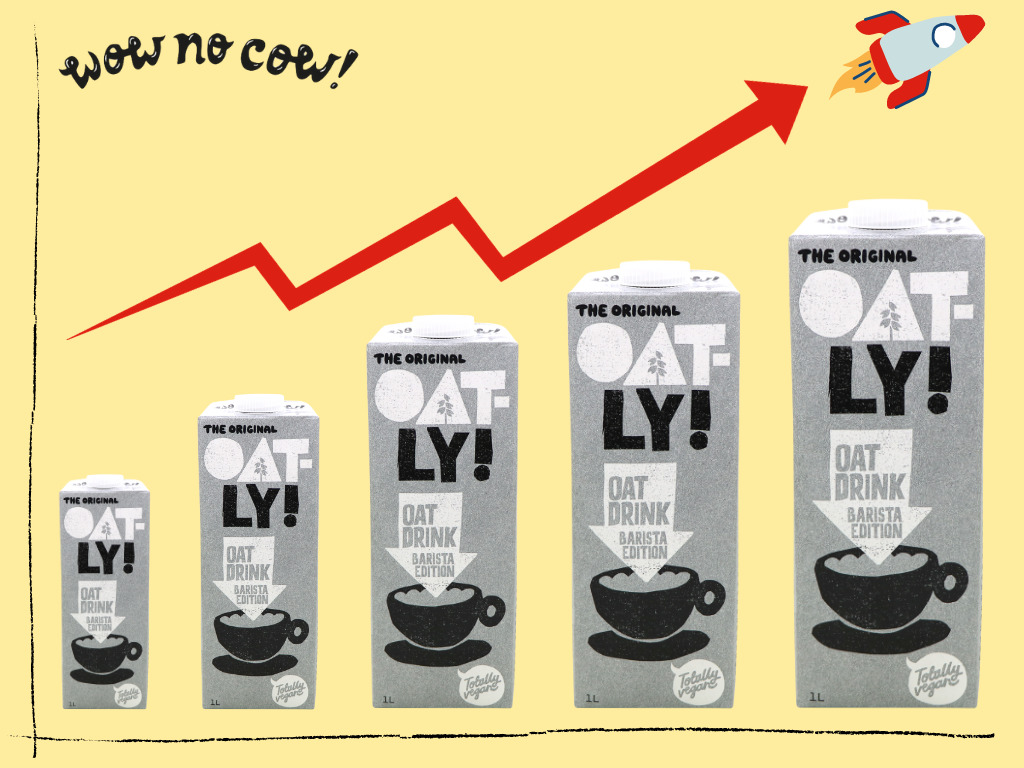4 Mins Read
The Oatly IPO is one of the most anticipated public listings of the year. We spoke to Asia Pacific alt protein investor Michal Klar of Future Food Now, an ecosystem expert we regularly collaborate with (last November, we published the first APAC Alt Protein funding stats on record together), who did a deep dive into the alt milk pioneer’s prospectus and shared his key insights below.
1) Sales doubled last year – and the growth is accelerating
Oatly reported US$421.4 million revenue in 2020, a 106.5% increase from US$204.0 million in 2019. And the momentum is accelerating: in 2019, the year-over-year growth has been 72.9%.
2) The company is not yet profitable
The company has reported a net loss of US$60.4 million in 2020, up from US$35.6 million a year before. Oatly’s gross profit margin hovered around 30% last year (for a total US$129.2m).
3) Oatly’s 2020 revenue & loss numbers are remarkably close to Beyond Meat’s
Oatly’s key financial metrics for 2020 are very similar to those of another popular plant-based food brand that went public, i.e. alt meat leader Beyond Meat. In 2020, Beyond reported net revenues of US$406.8 million, gross profit of US$122.3 million and net losses of US$52.8m.
For information, when Beyond Meat went public on the Nasdaq two years ago, the 2018 sales data they published in their IPO prospectus was as follows: net revenues of US$88m with net losses of US$30m.
4) Asia is Oatly’s fastest-growing region by a fair bit
The oat leader’s Asia-based sales increased 5x in 2020 and exceeded US$53 million. For comparison, during the same period Oatly revenue was up 2.5x in the Americas region and 1.7x in Europe and the Middle East.
Oatly’s products are sold at 17,000 food service and retail outlets across Asia, almost as many as in the Americas (17,500). About 55% of Asian locations are in mainland China, including 4,700 Starbucks stores in the country.
5) Cafes and restaurants are important, but most of the company’s sales come from retail channels
While 25% of Oatly’s revenues comes from food service channel (including coffee and tea shops), which is not insignificant, retail sales account for a vast majority of the company’s income- a whopping 75%.
6) E-commerce is a major revenue channel in mainland China
21% of Oatly’s 2020 mainland China sales come from e-commerce channels, which includes Alibaba’s Tmall, JD.com and other mainstream e-commerce retail platforms. On Tmall.com, Oatly claims to have “outsold plant-based competitors by at least three times”.
7) In some European markets, Oatly accounts for a large share of the growth of the plant-based milk category in 2020
In the context of oat milk being the fastest-growing dairy alternative globally, Oatly quoted data showing that the brand has been a top contributor to the growth of the entire plant-based milk category in some of its key markets: a 49% contribution in the UK and a 43% share in Germany. The US market is more competitive, with Oatly accounting for the 13% to the growth of the category.
8) The company is rapidly expanding its production capacity
In 2017 the company manufactured 51 million litres of finished goods (mostly oat milk). From 2018, Oatly invested over US$218m to expand production capacity and in 2020, their production reached 300 million litres. With the expansion of current facilities, as well as new plants planned in the UK, China and Singapore, the capacity is expected to reach 600 million litres in 2021 and 1 billion litres by 2022, representing a nearly 20x increase over 5 years.
9) Oatly may seek a second listing in Hong Kong
Chinese state-owned China Resources is one of Oatly’s largest shareholders (via joint-venture with Belgium’s Verlinvest), and could be entitled to board positions post IPO. It could be problematic if U.S. authorities decide to crack down on China-owned firms, which could lead the Swedish upstart to seek a Hang Seng Index listing: “Upon a written request by China Resources or its affiliates […] we shall promptly seek an additional listing on the Hong Kong Stock Exchange”.
10) The prospectus does not address Oatly’s potential valuation
The Nasdaq filing does not include a valuation, but media have speculated Oatly’s market cap could reach US$10 billion at the IPO. The last confirmed company valuation has been over US$2 billion, at the time of Blackstone’s investment in mid-2020. If the same revenue multiple at which Beyond Meat is currently trading were to be applied to Oatly, it could indeed get very close to the rumoured US$10 billion.
Lead image created by Green Queen Media.



